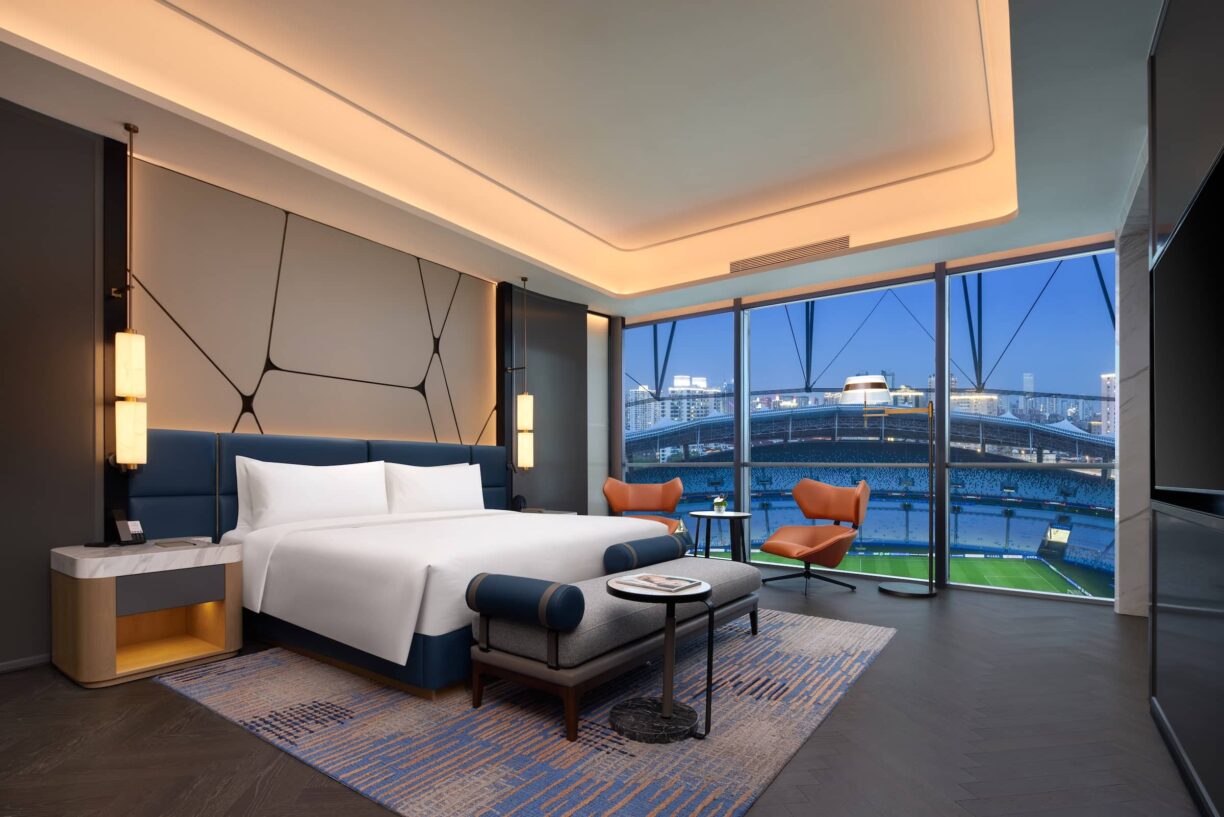Home spa design isn’t just about luxury—it’s about carving out a dedicated space to decompress, reset, and prioritise your wellbeing.
In a world that moves too fast, the idea of a private sanctuary where you can unplug and unwind is no longer indulgent—it’s essential.
Got a spare room gathering dust? Maybe a loft that’s more storage than sanctuary? Even the tiniest bathroom nook can become your personal haven with the right bits of furniture and a smart layout. It’s all about working with what you’ve got—and making it feel like somewhere you actually want to spend time.
Here’s how to do it thoughtfully, beautifully, and in a way that suits your lifestyle.
Start with the Atmosphere: Setting the Tone
Before you start chucking furniture into your Pinterest board or playing Tetris with the layout, take a minute. What kind of mood are you actually going for?
Are you dreaming of a calm, minimalist haven with soft neutrals and clean lines—or do you just want a space that doesn’t stress you out the second you walk in?
Or perhaps a lush, tropical escape with warm woods and textured fabrics? Think of your spa as a physical manifestation of calm—everything in it should support that idea.
Start with natural light, if you’re lucky enough to have it. Sheer curtains or adjustable blinds will soften the space without blocking the sun entirely.
If your room’s a bit lacking in natural light (read: cave vibes), don’t panic. The trick is to fake it with soft, warm lighting—think LED dimmables, Himalayan salt lamps, or sneaky strip lights tucked behind mirrors. Basically, anything that gives off that cosy candle-glow without the fire hazard.
Don’t underestimate the power of a good whiff. A diffuser puffing out essential oils—eucalyptus, lavender, bergamot, whatever your vibe is—can totally flip your mood the second you walk in. It’s like a spa, but without the awkward small talk.
Spa-Grade Furniture Essentials
Comfort is non-negotiable. Every piece of furniture should invite you to pause and breathe deeply.
- The Lounge Chair or Chaise
A signature lounge chair is a centrepiece in most home spas. Opt for one with a reclined back, ergonomic support, and plush cushioning.
Got the room? Treat yourself to a full-size chaise longue—ideally with a ridiculously soft throw casually flung over it. It’s the kind of thing that instantly says ‘I’ve got my life together’… even if you’re still eating dinner on the sofa most nights.
- Heated Towel Rail or Warmer
It’s not strictly furniture, but absolutely worth the mention. Stepping out of a bath or shower to a warm towel is a small act that delivers huge comfort. Wall-mounted or freestanding models are available to suit any layout.
- Storage that Doesn’t Feel Like Storage
Spa spaces need to be visually calm, and clutter is the enemy of serenity. Hidden storage—such as floating cabinets, under-bench drawers, or built-in niches—is your best friend.
Use storage baskets made from seagrass or rattan for a natural finish that feels organic and intentional.
- Massage Table or Treatment Bench (Optional)
If you’re serious about your spa rituals and have the space, a foldable massage table with adjustable height and padded top could be a smart investment. Even if you’re not using it daily, it’s great for occasional treatments or stretching sessions.
Materials Matter: Choose with Intention
Natural materials feel better—literally and emotionally. Stick to wood, stone, cotton, bamboo, linen, and glass wherever possible.
A sleek bamboo bench. A cedar wood stool. A pebble tile mat underfoot. These tactile details add up to an immersive experience.
For surfaces, acrylic and polycarbonate panels offer a modern, low-maintenance alternative to traditional wood or tile, especially in wet areas.
This is where companies like Cut My come in. Their precision-cut plastic sheets can be customised for shelving, splashbacks, or cabinetry, blending sleek aesthetics with practical water resistance. The result? A cleaner look that’s easier to maintain—without compromising on style.
Zoning the Layout for Flow and Function
You don’t need a sprawling space to create zones; just be smart with spatial boundaries.
- The Wet Zone
This is your bath, shower, or steam area. It should feel separate, even if it’s only visually. Use screens or translucent partitions to create a sense of privacy without closing the space off. Non-slip mats, drainage-friendly flooring, and waterproof finishes are key here.
- The Dry Zone
This includes your lounging area, treatment bench, or yoga mat. Prioritise warmth—soft rugs, wall panelling, and calming colours help signal this as a restorative zone.
- The Prep/Refresh Zone
A sleek vanity or compact wash area lets you apply skincare or meditate while sipping herbal tea. A large mirror with soft lighting enhances the feeling of spaciousness and adds a gentle rhythm to your self-care rituals.
Bonus Touches That Elevate the Experience
Sound: Soft ambient playlists, water features, or even the faint hum of white noise can enhance calm. Wireless speakers hidden behind panels keep things elegant.
Greenery: Plants like peace lilies, ferns, or snake plants thrive in humid environments and bring a restorative energy to the room. They also purify the air.
Textures: Layering matters. Towels should be thick and plush, robes oversized and enveloping, rugs soft underfoot. A few textured elements—a stone tray, a ceramic diffuser, a wool basket—add richness.
Final Thoughts: Make It Yours
The ultimate home spa isn’t about copying a luxury hotel or Instagram reel—it’s about designing a space that you will use.
Every choice should centre your comfort and your rituals, whether that’s a daily 10-minute steam or a once-weekly bath with a book.
Don’t aim for perfection. Aim for peace. Your spa should evolve with you—just as calming as it is personal.





